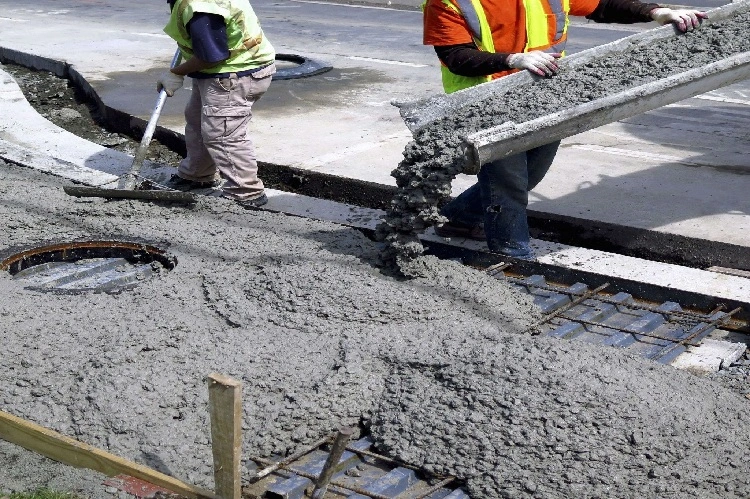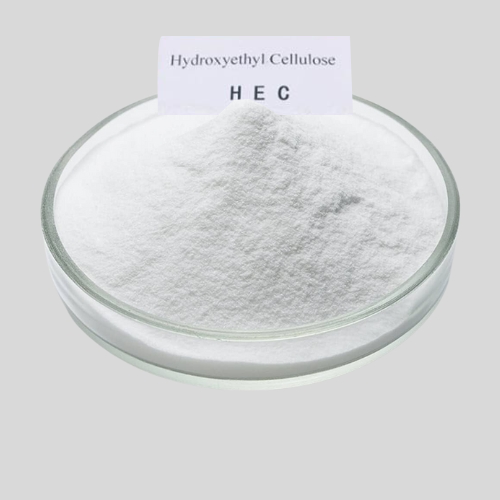Introduction
Concrete is more than simply a mixture of cement, water, and aggregates. It is a system in balance. The way it flows, adheres, and finishes is highly dependent on its viscosity.
Here is where viscosity modifying admixtures (VMAs) come into action. VMAs provide concrete with cohesion and consistency without adding additional water, which can be the difference between a messy and sloppy finish, or a smooth, durable finish.
In this article, we discuss how VMAs operate, where they are used, their advantages, and what types of enrichments exist for concrete in contemporary construction.
Table of Contents
What Are Viscosity Modifying Admixtures?
A viscosity modifying admixture is a specific type of chemical additive that manipulates the internal flow properties (rheology) of fresh concrete. A VMA does not increase the water content, but maximizes the interactions between the cement grains and aggregates.
A smoothly mixed concrete will not segregate, bleed excessively, provide better flow for pumping or pouring, and will maintain (hold) elements like fibers or reinforcing mesh in place.
In short, VMAs will improve the ease of handling and produce a more predictable product, especially in difficult mix designs.
Applications of VMAs
The versatility of these relatively cheap and powerful admixtures can be used in a variety of construction settings:
High-Performance Concrete
Designing for a variety of applications, whether it is pavement or bridge deck construction, structural concrete for Colbert dams, or deep foundations, speculating about certain conditions makes it easier at the time of implementation.
Self-Consolidating Concrete (SCC)
Ideal for creating an intricate and detailed precast structure or when space is tight, where the concrete needs to flow or spread rather than vibrate into place.
Underwater Concrete
Mainly for marine applications, e.g., piers and submarine foundations, where segregation of the concrete is typically even more of a challenge than it already is.
Shotcrete
Used as a spectacle liner and slope stabilization material. Should there be a need to repair concrete i.e., tunnel repairs or rock stabilization, VMAs eliminate the chance of sagging concrete or bouncing off the surface.
Pumped Concrete
Common practice in high-rise building construction, or when preparing a vertical pour with limited access to pour the concrete and accessibility, VMAs allow the mix to flow without resistance through the feeder pipes connected to a concrete pump.

Mass Concrete
Commonly used for structures such as dams or other large foundation pours. Mass concrete is incredibly thick and can be placed at the same time to achieve several batches of concrete.
Architectural Concrete
When hiring a contractor to produce decorative concrete exposed surfaces, they expect a stable mix design and one that won’t have bleeding or cracking.
Fiber-Reinforced Concrete
Especially helpful in preventing polymers from segregating on industrial slab floors, pavements, or any other applications where fibers are used.
Lightweight Concrete
Used to put cohesiveness in their mixes with lightweight aggregates without adding water.
Roller-Compacted Concrete (RCC)
Use of VMAs can help to create a uniform level of compaction to concrete, placing the concrete on a pavement or base for an industrial installation.
Reabilitated Placed Concrete in the form of Flowable Fill (Controlled Density Fill)
Improvement in backfilling around trenches and between utilities. VMAs produces a self-leveling flow of concrete without separation of any materials in the mix design, often without adding water.
Concrete Repair
Used for pedestrian and masonry repairs, concrete overlays, and patching. Where VMAs will improve the bond in the placement.
Key benefits of VMA
Better Workability
A fluid combination is more conveniently placed and finished.
More Cohesion
The combination will hold together, preventing gelling, fibers, or combinations of both from sinking out.
Improved Pumping
The VMA helps keep the concrete flowable and consistent during pumping.
Lower Permeability
A denser and more uniform combination has improved resistance to the infiltration of water or chemicals, great for durability.
Better Surface Quality
Less bleeding and segregation mean fewer problems maintaining smooth, polished surfaces.
Less Cracking
Keeping similar set times and less bleeding helps with shrinkage-induced cracking.
Higher Final Strength
Less water increases long-term strength and durability.
Admixture Compatibility
It can easily be incorporated with many other admixtures, including superplasticizers or retarders.
Improved Durability
Denser and better mixes handle harsher chemicals and freeze-thaw cycles better.
Reduced Flow
VMAs can assist with creating thixotropic combinations (flow under pressure but stable otherwise).
Less Bleed Water
It can help minimize surface bleed, allowing for better finishing.
Better Bond
Can improve the bond of concrete to embedded items and coatings.
Less Shrinkage
Helps regulate the drying process of concrete and thereby the number of drying deformations.
Additional Water Retention
May improve internal water retention, which supports off-site with extended curing times and enhanced strength development over time.
Better Chemical Resistance
Concrete that is denser is better able to handle aggressive environmental conditions.
What Are The Different Types of Viscosity Modifying Admixtures?
There are many types of Viscosity Modifying Admixtures that are available for concrete:
1- Cellulose Ethers
Includes methylcellulose (MC), hydroxypropyl methylcellulose (HPMC), and hydroxyethyl cellulose (HEC).
- Develops gel-like viscosity and water retention capacity.
- Stabilizes the mix, especially in hot or cold conditions.
- Suitable for plaster, grout, stucco, and vertical applications.
2- Polycarboxylate Ethers (PCEs)
- High-performance water reducers that significantly enhance workability.
- Allow concrete to be stronger with less water.
- Maintain slump and pumpability for longer periods of time.
- Ideal for high-rise columns, precast structures, and ready-mix.


3- Lignosulfonates
- Plant-based by-products, inexpensive and very efficient.
- Disperse cement particles, reduce water requirements, and enhance flow.
- Ideal for use in hot weather, in conjunction with big pours, with safety margins in mind for improving cohesion.
4- Hydroxyethyl Cellulose (HEC)
- A soluble polymer that will enhance the viscosity of the mix.
- Controlled water bleeding, improved placement, and retains fiber mixes.
- Ideal for tile adhesives, grouts, and self-leveling overlays.


5. HEUR (Hydrophobically Modified Ethylene Oxide/Urea)
- Synthetic polymer that provides both flow and stability.
- Works extremely well with self-consolidating concrete and shotcrete.
- Allows flow under pressure and can regain viscosity very quickly once the loads are static.
6. Polyethylene glycol (PEG)
- Increases mix thickness and sag resistance.
- Improves structural grout, repair mortars, and slurries to increase bond.
- Useful when precision and stability is crucial.
How to use VMAs: Best Practices
Here is how to mix in VMAs to your concrete operations:
Add directly during batching.
Mixed the VMA in with the cement and aggregate prior to adding water, to allow for an even dispersal.
Pre-blend with dry mix.
If using powder VMA you can mix it with the dry ingredients to avoid clumping.
Injecting the VMA as a liquid.
You can inject the VMA through a dosing pump with the mixing water for the most control.
Adding during transit (ready mix trucks).
You can add portions onsite for long-haul mixes or if the mix is going to sit on the truck for a longer duration; coordinate with dispatch and dosing with the supplier.
Batched Plant Integration.
You can program the VMAs to get added very precisely in conjunction with all other raw materials during automated batching; great if you are working on large, high-volume projects that require consistency.
Tips for Incorporation
Use recommended dosages. Using too little will provide no effect, and using too much will over-thicken the mix and restrict flow.
Trial mixes matter. Always complete trial mixes prior to any impacts to verify performance suited to the site-specific conditions.
Remember that all chemical admixtures may have side effects but the proportions may not be important depending on the site project. VMAs may slow the setting time if integrated into the concrete mix; the user controls the mixing time and other admixture material added to find the balance.
Combine Smartly: For optimum results, use in conjunction with a superplasticizer or air-entraining agent.
Temperature Guidance: RubAdder performance is affected by extremely hot or cold weather; your dosage rate may need to be varied.
Mix Thoroughly: Proper, consistent, and uniform mixing of the RubAdder is needed, since poor distribution may result in localized changes in viscosity.
Performance Observations: Did the slump stay, was the pump output reduced, was there sufficient surface finish, and did bleed occur afterwards?
Manufacturer Guidelines: Always follow the supplier’s directions and make any appropriate adjustments for the on-site conditions.

Conclusion
In a world filled with complex concrete that is used today, Viscosity Modifying Admixtures will prove essential in ensuring flow, cohesion, and finishing under conditions ranging from tall towers or underwater pedestrian decks.
The use of Viscosity Modifying Admixtures, whether cellulose, polymer, or lignin-based, can reduce challenges of mix performance and take the burden when design or logistical issues arise.
In every instance, using Viscosity Modifying Admixtures has generally led to improved durability or reduced cracking in sites all over the globe, leading to visual or aesthetic improvement of existing or new works and so reducing liabilities.
As construction techniques evolve toward higher performance and greener practices, VMAs remain a key tool. Use them thoughtfully, in the right dose and combo, and your concrete will not just flow better, but perform better.
Sandip Agrawal, Polymer Engineer and MD of Sakshi Chem Sciences Pvt. Ltd., leads innovation in construction chemicals, shuttering oils, and industrial lubricants. With expertise in polymer science and eco-friendly solutions, he drives R&D and sustainable advancements, ensuring high-performance products for India and global markets.


